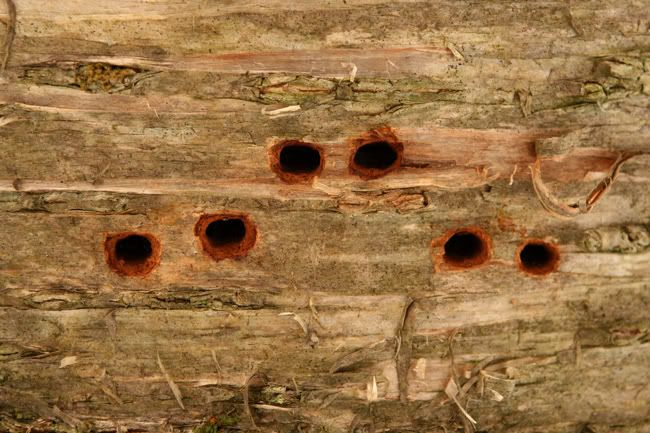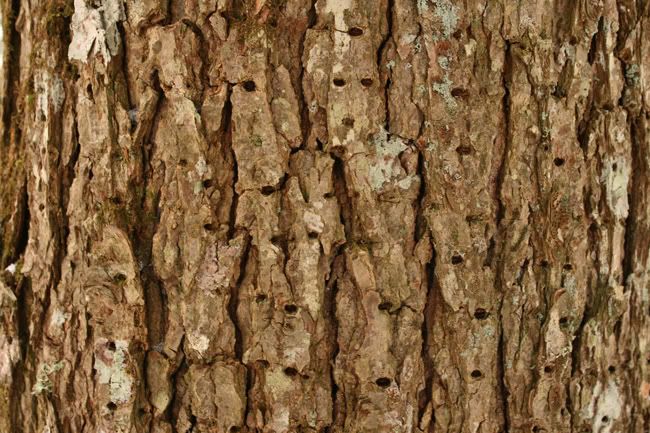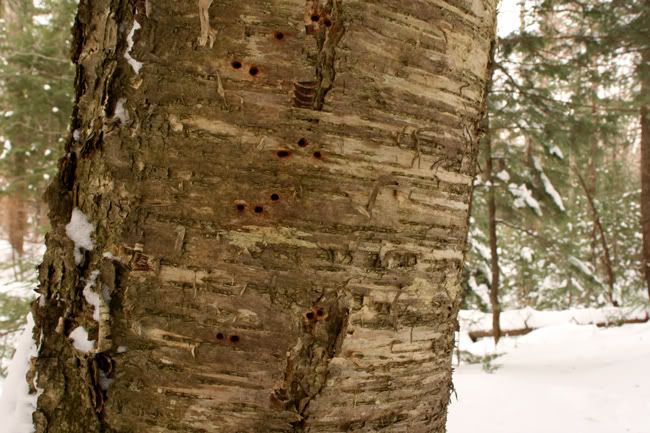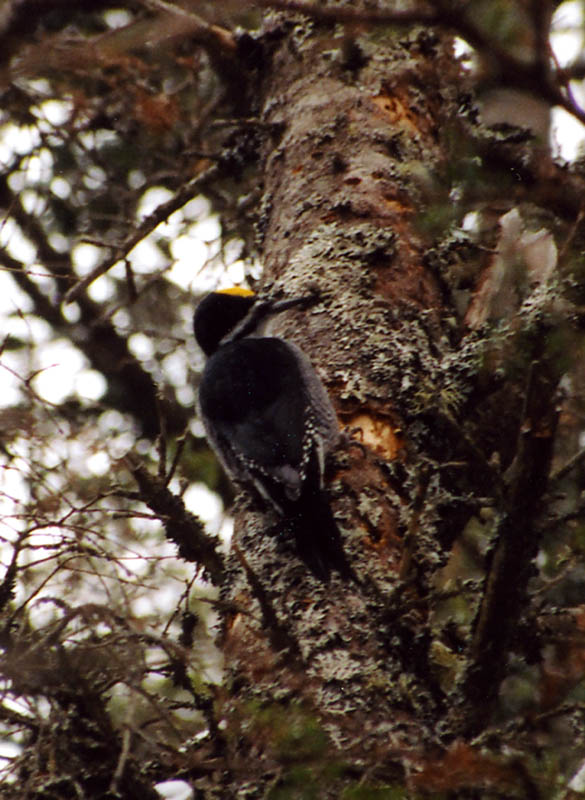forestgnome
New member
Is it possible to know what species made these holes, or at least narrow it down? I'm pretty sure it wasn't the piliated. 
These are on a birch. The holes are about the size of a pea, and 3/4" deep.

These are on a hemlock. The holes are about the size of a bb, and about 1/4" deep.

Thanks for any help.
happy trails
These are on a birch. The holes are about the size of a pea, and 3/4" deep.

These are on a hemlock. The holes are about the size of a bb, and about 1/4" deep.

Thanks for any help.
happy trails


